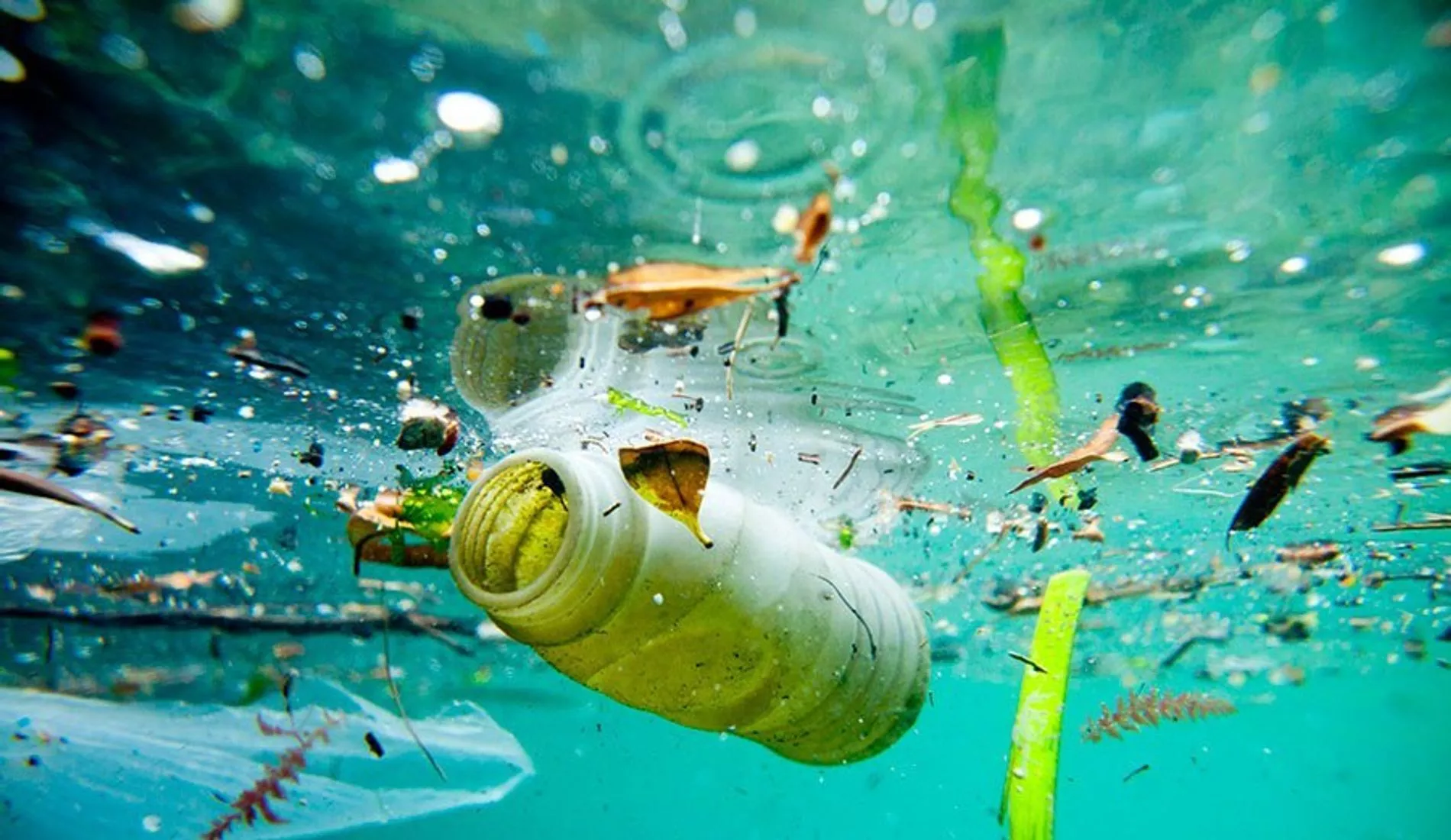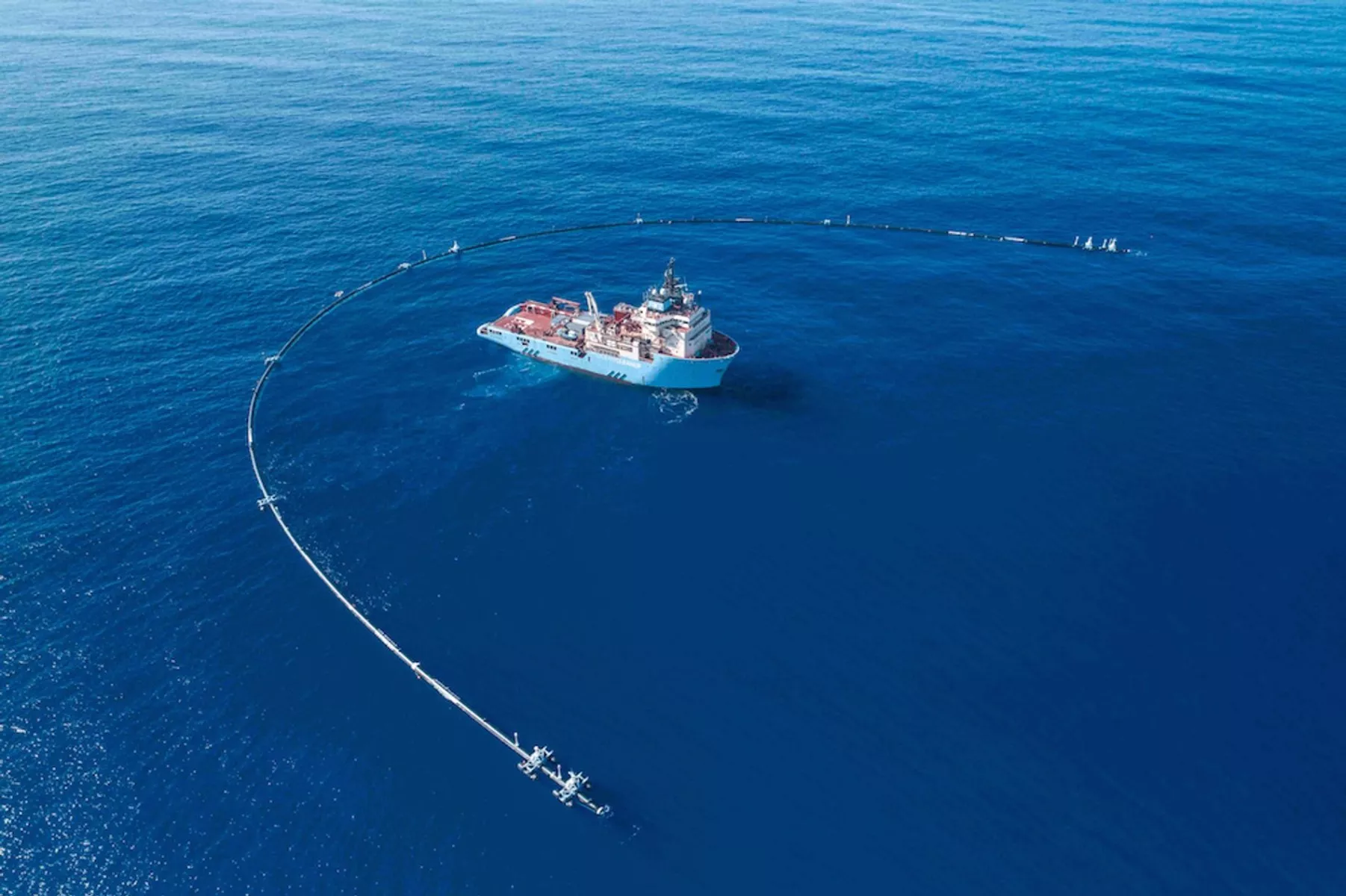Get 10% off and be the first
to discover new brands!
I remember the first time I noticed the evidence of the degradation of our oceans. I must have been around 10 years old, enjoying my summer holidays in the Finnish archipelago, when I was banned from swimming. The reason being that the Baltic Sea was blooming with toxic blue-green algae.
Although the blooming of algae is a natural phenomenon, eutrophication (excessive nutrients in a body of water), resulting from rising water temperatures and pollution, has made these blooms more frequent and intense. The blue-green algae, or cyanobacterial, bloom occurs almost without fail every year late in the summer. Incidentally, that is also when the ocean would be the most inviting, were it not for the presence of rash and diarrhea inducing bacteria.

The Baltic Sea Acid Test
The Baltic Sea is more sensitive to environmental changes than other oceans, due to it being fairly small and almost entirely surrounded by land. The Öresund Strait, which separates Denmark from Sweden, is very narrow (28 km at most) and inhibits water flow from the Atlantic. Hence, The Baltic Sea stands as an isolated, small-scale example of what could happen to all of our oceans if business continues as usual.
I am relieved, however, that combined efforts by Nordic and Baltic countries to reduce the input of nutrients, especially nitrogen and phosphorus, during the past few decades have resulted in recovering conditions for the Baltic Sea. It’s still experiencing adverse effects such as eutrophication, acidification and oxygen depletion, but the sea is still hanging in there, on the road towards recovery. This demonstrates, that although some of the damage to our oceans may be permanent, most of it can be reversed.

What Hope Is There For Our Oceans?
Still, the situation is looking pretty bleak. The largest oceans of our planet are being constantly burdened by human detritus. Meanwhile, most of humanity appears indifferent towards the destruction of our pelagic areas. Any individual effort to make a change may seem like just another drop in the ocean.
Thankfully, there are many raindrops falling and the rain is getting heavier. A plethora of individuals and organisations are already storming ahead, trying to achieve a better future for our oceans. With that, public opinion is swaying, especially around the coasts where the effects of pollution can be observed more easily. The inhabitants of these areas are becoming more conscious about what and how they consume.
Although most of the legwork is done by non-profit organisations, some of the most inspiring projects are imagined by individuals motivated by a deep love for their planet. While it would be difficult to express ample gratitude to every activist and organisation that dedicates their energy to safeguarding the health of our oceans, we can at least list a few projects that The Fair Cottage finds most inspiring.
The Seabin Project
In addition to eutrophication, one of the largest threats to marine habitats is plastic. By some estimates, 1.15 to 2.41 million tons of plastic are entering the ocean every year through rivers. Plastic will not degrade during our lifetimes, nor during that of our direct descendants. Even alternatives such as biodegradable plastic are not great solutions.

Jacqueline McGlade, chief scientist at the UN Environment Programme, interviewed by the Guardian claims “A lot of plastics labelled biodegradable, like shopping bags, will only break down in temperatures of 50°C and that is not the ocean. They are also not buoyant, so they’re going to sink, so they’re not going to be exposed to UV and break down”.
So as with regular plastic, these will eventually end up in the food chain, polluting all life forms present in the oceans and eventually ending up on our dinner plates. To combat some of this accumulation of plastic, The Seabin Project was founded by Australian surfers Andrew Turton and Pete Ceglinski.
Their product is astonishingly simple, yet effective. It is basically an automatic garbage collector (or a floating debris interception device, as described on their website) which can be placed in calm and polluted bodies of water, such as marinas. It works by sucking water from the surface with a water pump, and filtering the water through a “catch bag” and an oil filter. The clean water is then released back into the marina.
Each Seabin is relatively cheap by commercial standards, starting at € 3,300per unit. Considering that each unit is capable of collecting half a ton of debris per year, a wide-spread use of these could have miraculous results in the cleanliness of marinas and ports.
Surfrider Foundation
These surfers are not the only ones to strive towards the preservation of our oceans. Ever since the 1980’s, the numerous volunteers and members of the Surfrider Foundation, which started as a group effort of Californian surfers, have been doing their utmost to protect and preserve coastal regions and the oceans.
Initially, they were concerned with the overdevelopment and pollution of Malibu, which was threatening the existence of their favorite surf breaks. Nowadays, the non-profit consists of numerous grassroots chapters that work to preserve water quality, beaches, surf spots and marine ecosystems all around the globe.

The European chapter is known as Surfrider Foundation Europe, and was founded in Biarritz in 1990. Today the chapter is comprised of 1,700 volunteers and 10,500 members that are all committed to improving water and beach quality in Europe. According to the foundation’s website, focus lies on 5 areas; water quality & health, marine litter, maritime transport, artificial coastal development, heritage & waves.
Additionally, Surfrider Europe attempts to drive social change by influencing the policy makers of the EU and contributing to the enforcement of policies concerning marine conservation, while striving towards a change in social attitudes by organising educational programs and building environmental expertise. You can read more about projects, passions and participation on the Surfrider Foundation website..
If you are a surfer and looking for ways to help protect the environment on which your passion relies, check out our article on the ECOBOARD project, the first independent standard for recognising sustainably made surfboards. Also, stay with us for TFC’s 5 Essential Eco Surf Accessories article, coming soon.
The Ocean Cleanup
A more ambitious undertaking is The Ocean Cleanup project. It is the brainchild of Dutch inventor Boyan Slat, and the intentions of the organisation lie in “developing advanced technologies to rid the world’s oceans of plastic.”

The main objective is to use “passive drifting systems” to clean up the notorious Great Pacific Garbage Patch. The garbage patch is the largest of five unfortunate accumulations of plastic debris in our oceans. This one is located in the Pacific Ocean between Hawaii and California. By some estimates, it consists of 1.6 million square kilometers, which is three times the size of France. Yeah, try to wrap your head around that!
The project is launching a passive system, which is intended to float on ocean currents, at a slower speed than the garbage patch, causing plastic to accumulate and be diverted into the cleanup system. The organisation is expecting to remove up to 50% of the garbage patch in 5 years’ time.
The effectiveness of the technology remains to be seen, but with testing already underway at the Great Pacific Garbage Patch hopefully it won’t be too long until we see some positive results. Of course, the best solution to the problem of mass plastic pollution is for the world to reduce our reliance on the material, especially single use plastic. Look out for top tips article for reducing your plastic consumption, coming soon.

Manufacturing Better Oceans
Plastic is not the only culprit. A huge amount of debris and chemicals are also being released into the environment by industrial plants, with much of it eventually ending up in our waterways. And while the textile industry is often accused of being a major contributor to industrial waste, some brands are using outdoor fashion to create social change and work towards restoring the environment.
Of these brands, probably the most influential and noteworthy is Patagonia. You can read more about their projects and efforts in our article: TFC’s Top 3 Sustainable Outdoor Brands. As well as being the founder of Patagonia, Yvon Chouinard helped launch 1% for the Planet with Craig Matthews, founder of Blue Ribbon Flies. The non-for-profit model motivates individuals and businesses to contribute with either annual donations or everyday actions.
The effectiveness of the money donated to the organisation is increased by identifying the most efficient environmental organisations and certifying that the contributions are being used as intended. With that, a massive network has been forged, with individuals, businesses and other non-profits, all contributing to good environmental and well audited causes.
The projects which we have covered here are but a splash on the surface of what’s possible. There are many more ideas being tried and tested in the field of ocean conservation across the globe. Despite this, and the millions of conscious people already helping to drive change, there is no room for complacency. The planet’s pollution problems were created by a global society and can only be undone by the collective efforts of individuals the world over. No raindrop is too small to cause a ripple in the great blue ocean. In any case, the waves that lap the shores will be here for a very long time to come. So too, hopefully, will the rich diversity of life that lives beneath them.
If you have any suggestions, questions or want to offer some in-kind assistance that could help grow the the project, or if you are interested in partnering or collaborating with The Fair Cottage, we would be delighted to hear from you.
You can also join our conscious network and contribute towards change by signing up to our mailing list.


